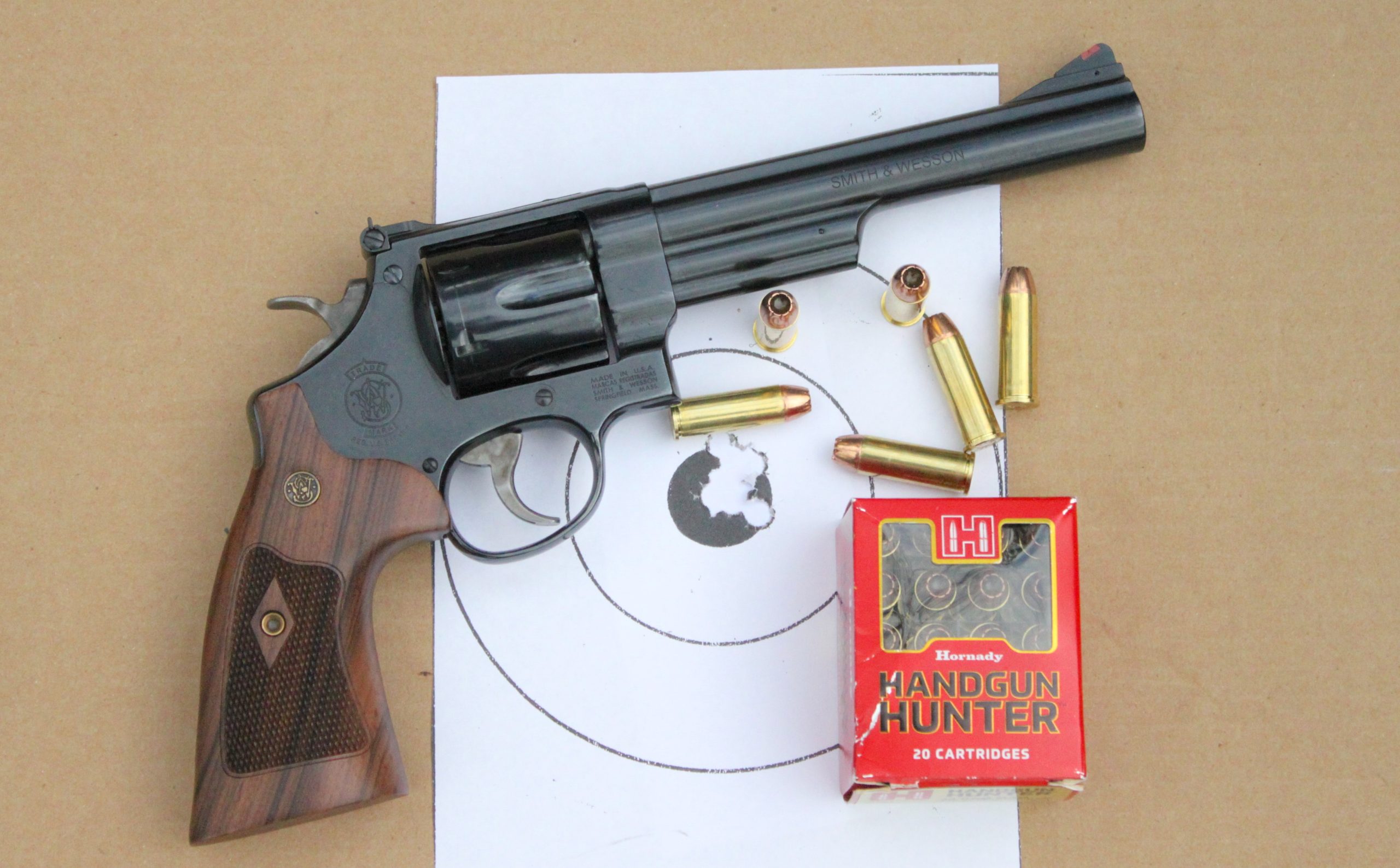
By Jim Dickson | Contributing Writer
When I took delivery of the new Model 29 revolver at Reeves Ace hardware in Clayton, Georgia it was obvious that Smith and Wesson had taken great pride in this gun.
I feel confident in saying that this revolver represents the finest work that Smith and Wesson is capable of. The fit and finish was beautiful to behold and the trigger pull was a dream. Measured with a Lyman mechanical trigger pull gauge from Brownell’s Gunsmithing Supplies the single action pull was 5 pounds and the double action was 13 ¼ pounds.
The double action was so smooth and easy that I could shoot just as accurately double action as I could single action. I can’t say that about every revolver.
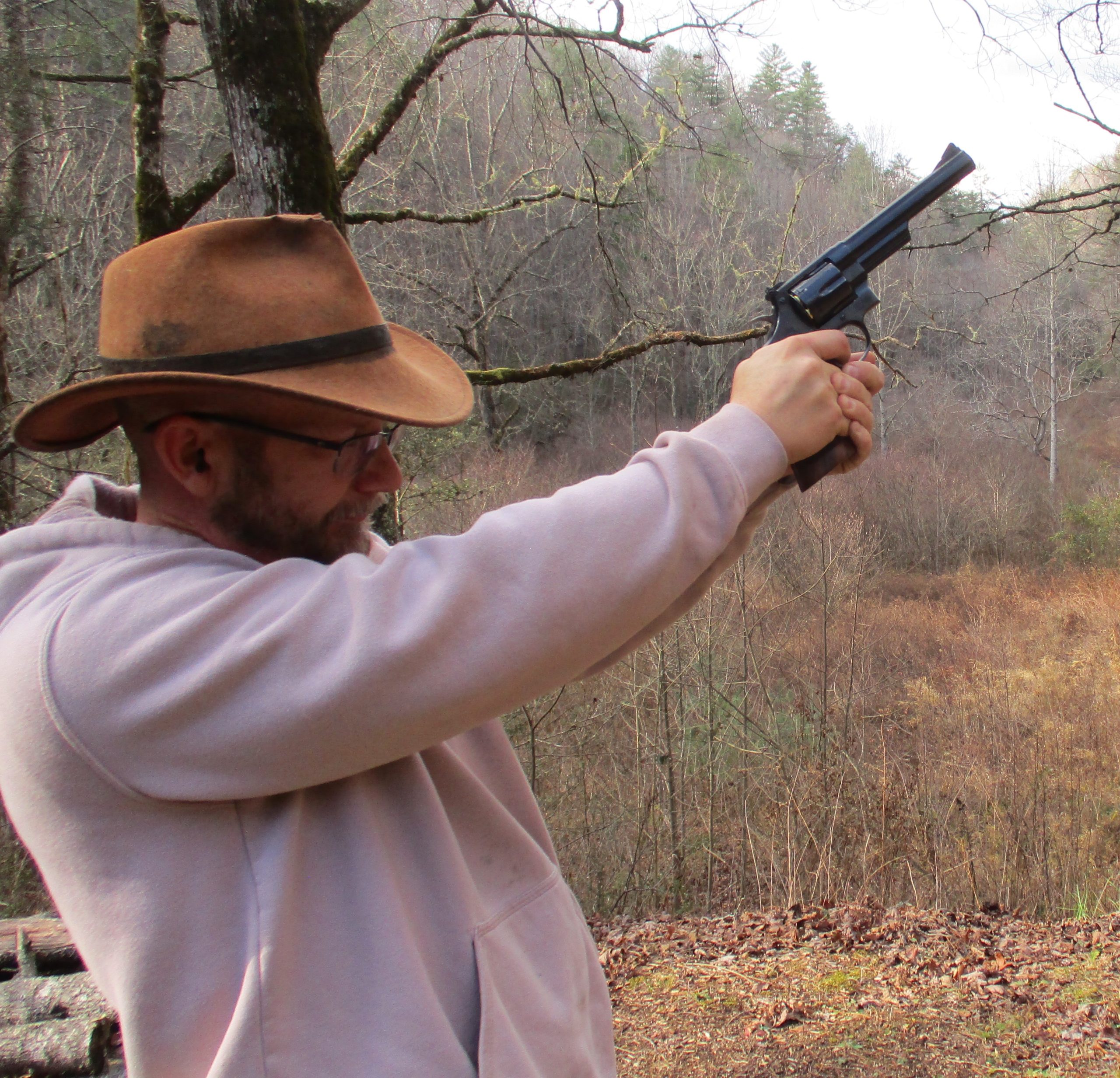
Shooting double action is the reason for a double action revolver’s existence and that is the way I shoot them. If I want single action shooting I use a single action handgun instead of using the single action feature on a double action handgun. Finding a revolver with such a fine double action trigger is not as common as you might think and it is something I really appreciate when I come across one.
Smith & Wesson has gone all out for this model revolver. It came with a plastic carrying case which had a complete cleaning kit except for the patches and oil. It also came with a deluxe wooden velvet lined display case. Now you don’t normally see those coming with a pistol let alone coming with both a plastic go-to-the-range case AND a deluxe wood case. In fact I don’t believe that I have ever seen this before. Smith & Wesson has really pulled out the stops and gone all out on this revolver yet the MSRP is only $1,379. It is well worth the price.
SEE ‘CLASSIC FIREPOWER’ MODEL 629
I had wanted the 8 3/8-inch barrel version as this is one of the steadiest revolvers ever made. I might add that I know an exhibition shooter who loves his for that reason. Unfortunately they aren’t making that barrel length anymore so I took the next longest barrel length which is 6 ½ inches. This is also the most popular length for this pistol.
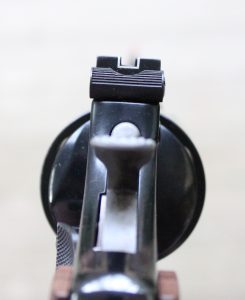
Perhaps the fact that Clint Eastwood used this length barrel in his famous movie “Dirty Harry” gave impetus to its popularity. While not as rock steady as the 8 3/8-inch barrel guns, the 6 ½- inch barrel model was still very steady. Just how hard or easy a particular gun is to hit with is something that gets far too little attention. I love a gun that is easy to hit with and I despise a gun that is hard to hit with, and this revolver is in the easy category.
Another favorite .44 Magnum barrel length is 4 inches. This was the length carried by the late Elmer Keith and my late uncle, Hugh Dickson. It is much easier to conceal. Certainly neither of the aforementioned men had any trouble successfully making the most difficult shots with their 4-inch barrel S&W .44 Magnums.
It was Keith who deserves most of the credit for making the .44 Magnum a commercially available cartridge with factory guns chambered for it. Lots of men had played around with hot loads in their .44 Special revolvers but it was Keith who went to the gun and cartridge makers and talked them into bringing out the .44 Magnum.
Fear of the new round being loaded into 19th Century black powder .44 revolvers led to the case being lengthened so that it would not chamber in any gun not made for it. Smith and Wesson and Ruger both fielded new revolvers and the .44 Magnum was off and running. Soon it became available in rifles as well and here it really shone, handily outperforming the venerable old favorite .44-40 cartridge. Indeed there are many who consider it a better rifle cartridge than a pistol cartridge because the recoil and muzzle blast in a pistol makes it difficult for a lot of folks to handle and that recoil effectively prevents rapid fire in a pistol.
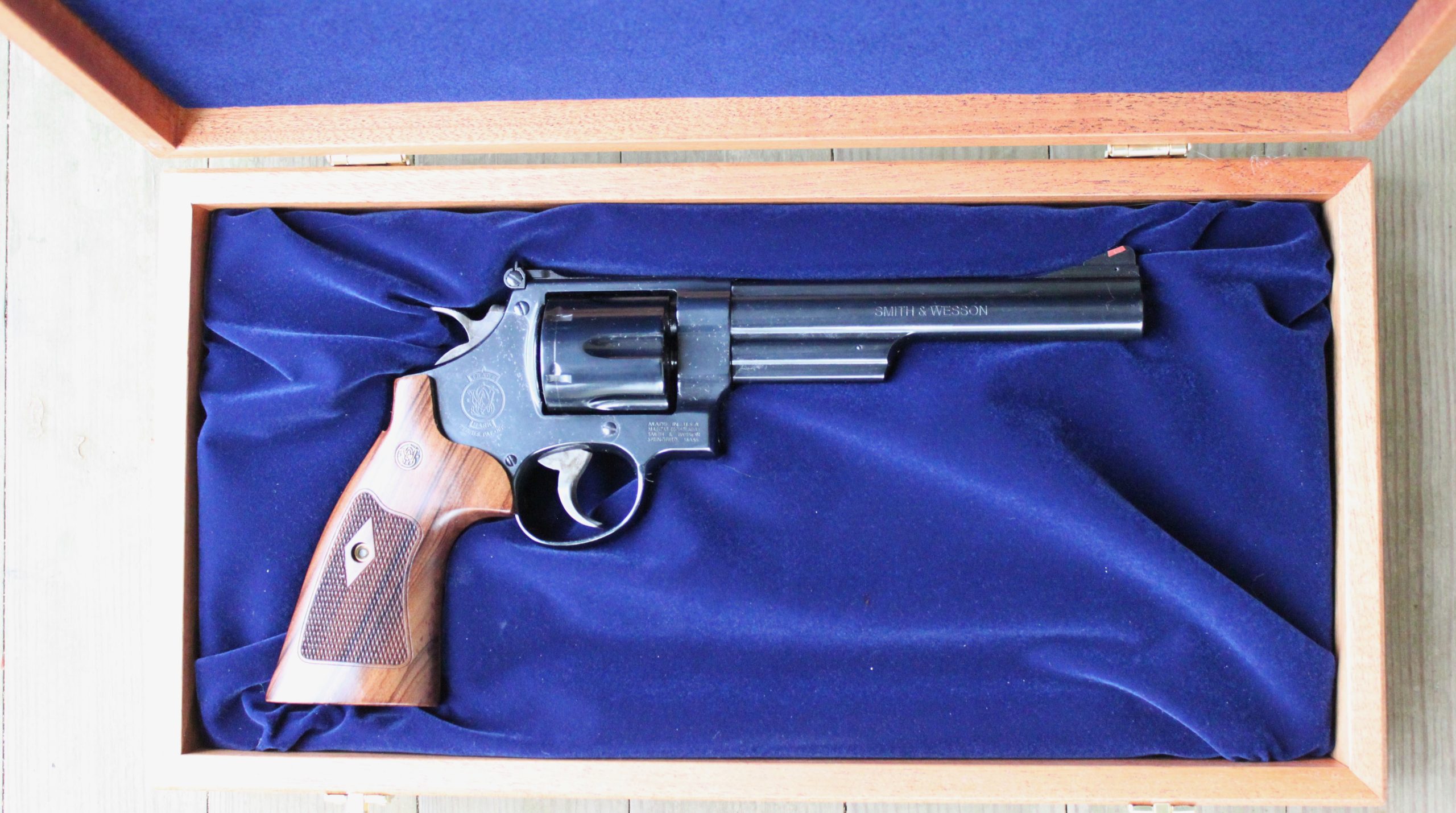
The famous gun designer Max Atchisson had a .44 Magnum that he shot a lot. He observed that no one could shoot a whole box of 50 .44 Magnums at once and still keep hitting accurately at the end of it. Like the really big bore rifles, you could only shoot so many shots at a time.
The solution to getting enough rounds fired at one time in practice to be effective was to use the parent cartridge, the mild recoiling .44 Special for practice. This enables a proper amount of cartridges to be fired at one time for the shooter to become proficient with this gun. The .44 Special also has much less muzzle blast than the .44 Magnum making it less hard on the ears.
Noise is measured in decibels which is a logarithmic scale so that a 10 decibel increase means 10 times more noise. A typical .44 Magnum measures 168 decibels while a typical .44 Special measures 165 decibels. That may not look like much but it is a big difference. Noise induced hearing loss, thanks to the National Firearms Act effectively banning suppressors from public sale, resulted in wide scale hearing loss in shooters. The advent and use of shooter’s earplugs and ear muffs helped but you don’t use them in hunting or emergency shootings. This has also led to deafness in old gun dogs.
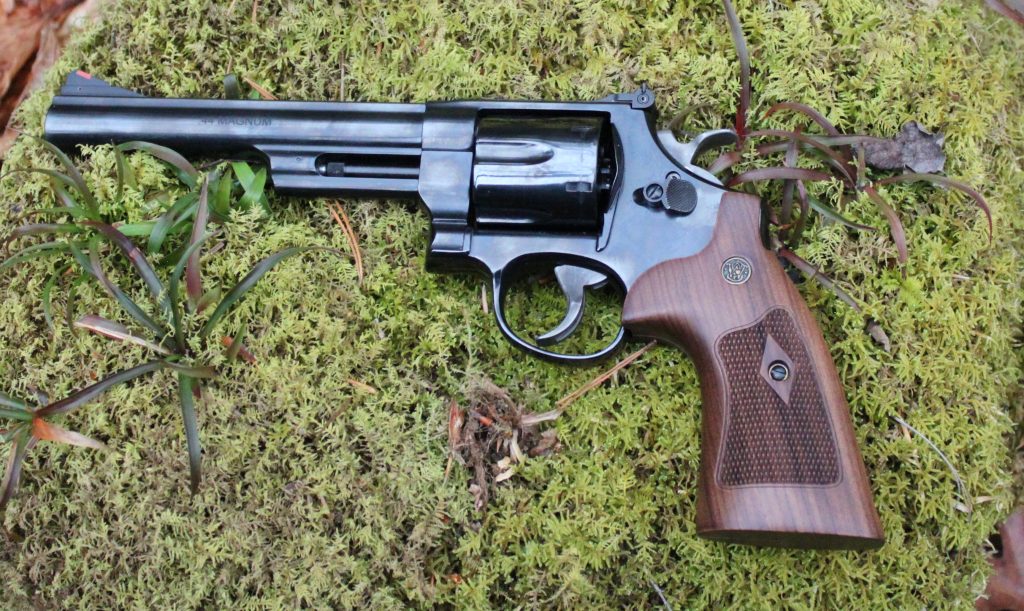
In England and on the continent there are silencers for the hunter’s shotguns available. This is why the total deregulation of silencers is a health issue that must be pursued until they are as freely available as car mufflers. True, revolvers are difficult to suppress because of gas and noise escaping at the barrel cylinder gap but every bit of decibel reduction helps. This is an issue that goes across the board covering all firearms for how many dedicated shooters own and shoot just one type of firearm? I never met one. Only in the movies are silencers 100% effective but because the decibel scale is logarithmic, even a small reduction in noise can make a big difference in preserving your hearing.
The .44 Magnum quickly became the darling of handgun hunters who always looked for more power. Soon every type of big game in North America had been successfully taken with the .44 Magnum handgun. It also proved popular as a backup weapon for big game hunters.
Years ago I knew a man who had laid his rifle aside while he skinned a caribou he had shot with it. Suddenly he felt he needed to look behind him and turning he saw a polar bear in the final steps of stalking him. There was no time to retrieve the rifle and just barely enough time to draw and fire the pistol on his belt. The polar bear made a very nice rug.
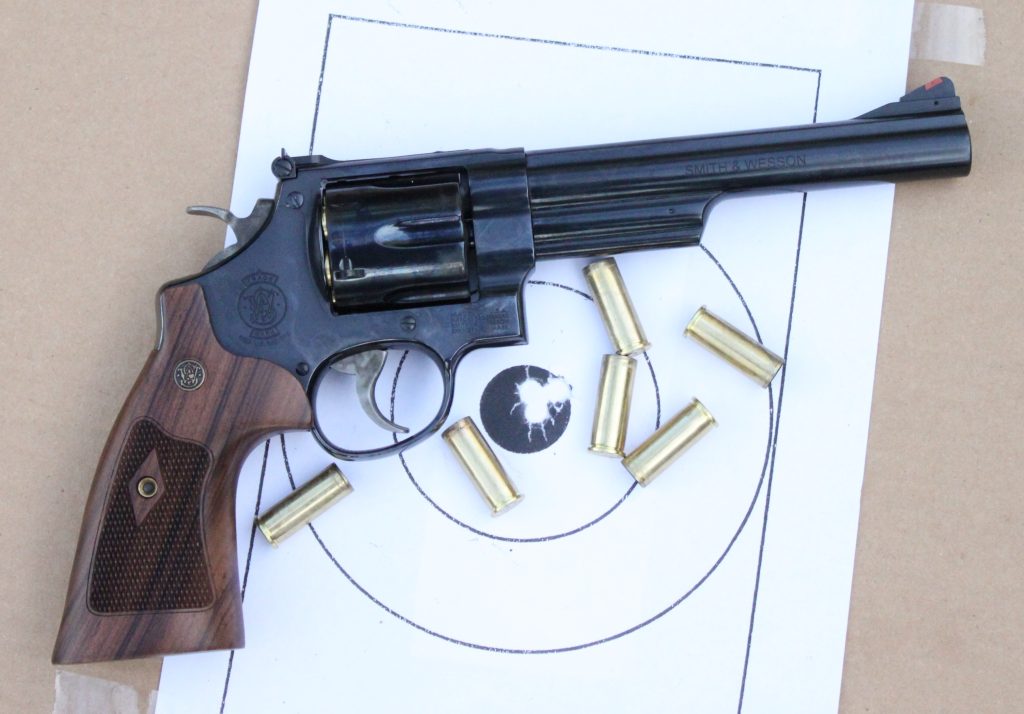
I had 150 rounds to test the Smith and Wesson M29 with consisting of:
- 60 rounds of Hornady Handgun Hunter .44 magnum with a 200 grain bullet (The same weight as the venerable old .44-40 which took more North American game than any other caliber) at 1475 FPS
- 20 rounds of Steinel .44 magnum with 215 grain hard cast spike at 1500 FPS. This unique looking round with it’s sharp point was made in response to customer requests and has proved a good seller.
- 20 rounds of Steinel .44 special loaded with the Hornady 240 grain XTP bullet at 930 FPS
- 50 rounds of Steinel .44 special RNFP Cowboy Action at 720 FPS
I found the S&W Model 29 a lovely shooting gun and I had a lot of fun with it. Now if they would just also make it in .45 Colt with the 8 3/8-inch barrel.



